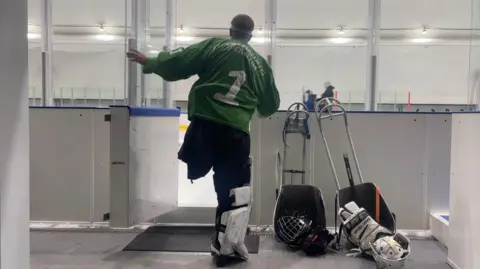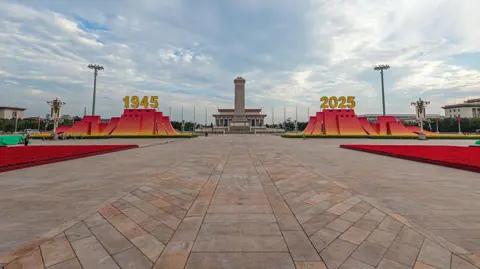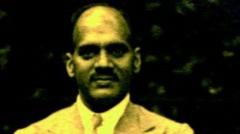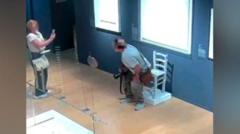Michael Smuss, a survivor of the Warsaw Ghetto in Poland who resisted the Nazis, has died aged 99 in Israel. He joined the ghetto uprising as a teenager in 1943, helping to make petrol bombs. Taken prisoner, he survived concentration camps and a death march before the end of World War II. After the war, he became an artist and Holocaust educator. The embassies of Germany and Poland in Israel paid tribute to him on social media. He repeatedly risked his life during the Holocaust, fighting for survival and helping other prisoners in the Warsaw Ghetto – even after he was captured by the Nazis and deported to concentration camps, the German embassy stated on X.
The Polish embassy said Smuss lectured youth on the history of Polish Jews and expressed his memories through art. His legacy endures. The Polish embassy and the Holocaust Educational Trust, a UK charity, called Smuss the last surviving fighter of the Warsaw Ghetto Uprising. However, in 2018, Israeli officials and international media, including the BBC, reported that Simcha Rotem, who had just died aged 94, was the last surviving fighter of the uprising.
Last month, Germany's ambassador to Israel awarded Smuss with the German Federal Cross of Merit, in recognition of his contribution to Holocaust education and promoting dialogue between the two countries, the embassy said. Thousands of people, especially young people in Germany, have learned from his testimonies.
Born in 1926 in the Free City of Danzig, Smuss later moved to Lodz before being deported to the Warsaw Ghetto with his father. Hundreds of thousands of Jews were crammed into the ghetto, where they faced poverty, starvation, disease, and cold. Smuss, who spoke German, was taken outside to work in a factory repairing and repainting helmets.
He joined the Jewish Resistance in the ghetto, and he and others started stealing as much paint thinner as possible to make petrol bombs. We filled up bottles that were put up on the roofs of all the houses close to the entrance of the ghetto with the expectation that once they're going to come, we’d be throwing them down, he said.
When the Nazis came to empty the camp on 19 April 1943, the uprising began. The resistance fought back with weapons they had exchanged for warm clothes from Italian soldiers who had been sent from Africa to the Russian front. The resistance, which Smuss called the greatest uprising in this war against Germany, lasted 28 days.
He described thousands of bodies lying in front of houses and 'the smell of gas and decomposed bodies'. On 29 April, he was taken prisoner. They were put on a train to the Treblinka extermination camp. As he witnessed people dying on the journey, my heart became a stone, he said.
Along the way, he managed to save himself and others by negotiating with employers looking to retrieve workers that had been taken from their factories. He endured forced labor at other camps, and finally a death march to Dachau before he would eventually escape his Nazi captors. Tragically, his father was killed trying to escape one camp, but his mother and sister, who had been able to stay in Lodz, survived.
After initially returning to Poland, Smuss moved to the US, where he worked, studied, and started a family. In search of help for trauma symptoms, he moved to Israel in 1979, eventually dedicating his life to art and educating others about the Holocaust. He is survived by his wife.
The Polish embassy said Smuss lectured youth on the history of Polish Jews and expressed his memories through art. His legacy endures. The Polish embassy and the Holocaust Educational Trust, a UK charity, called Smuss the last surviving fighter of the Warsaw Ghetto Uprising. However, in 2018, Israeli officials and international media, including the BBC, reported that Simcha Rotem, who had just died aged 94, was the last surviving fighter of the uprising.
Last month, Germany's ambassador to Israel awarded Smuss with the German Federal Cross of Merit, in recognition of his contribution to Holocaust education and promoting dialogue between the two countries, the embassy said. Thousands of people, especially young people in Germany, have learned from his testimonies.
Born in 1926 in the Free City of Danzig, Smuss later moved to Lodz before being deported to the Warsaw Ghetto with his father. Hundreds of thousands of Jews were crammed into the ghetto, where they faced poverty, starvation, disease, and cold. Smuss, who spoke German, was taken outside to work in a factory repairing and repainting helmets.
He joined the Jewish Resistance in the ghetto, and he and others started stealing as much paint thinner as possible to make petrol bombs. We filled up bottles that were put up on the roofs of all the houses close to the entrance of the ghetto with the expectation that once they're going to come, we’d be throwing them down, he said.
When the Nazis came to empty the camp on 19 April 1943, the uprising began. The resistance fought back with weapons they had exchanged for warm clothes from Italian soldiers who had been sent from Africa to the Russian front. The resistance, which Smuss called the greatest uprising in this war against Germany, lasted 28 days.
He described thousands of bodies lying in front of houses and 'the smell of gas and decomposed bodies'. On 29 April, he was taken prisoner. They were put on a train to the Treblinka extermination camp. As he witnessed people dying on the journey, my heart became a stone, he said.
Along the way, he managed to save himself and others by negotiating with employers looking to retrieve workers that had been taken from their factories. He endured forced labor at other camps, and finally a death march to Dachau before he would eventually escape his Nazi captors. Tragically, his father was killed trying to escape one camp, but his mother and sister, who had been able to stay in Lodz, survived.
After initially returning to Poland, Smuss moved to the US, where he worked, studied, and started a family. In search of help for trauma symptoms, he moved to Israel in 1979, eventually dedicating his life to art and educating others about the Holocaust. He is survived by his wife.



















